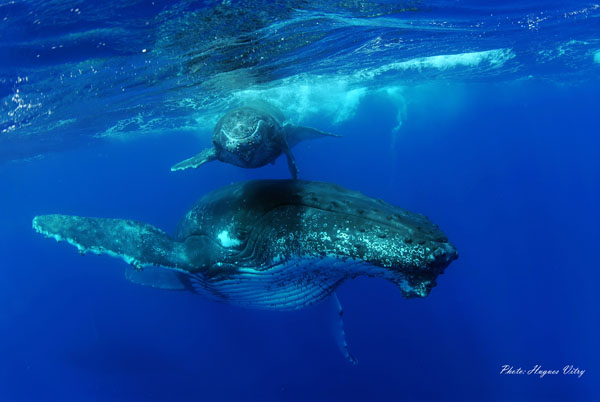Humpback Whales
Each year at same season from June to October, Humpback whales migrate in tropical waters for mating, give birth and milk their calves.
Humpback whales (Megaptera novaeangliae) also called megaptera is a species of baleen whale (Mysticete). Adults humpback whales are 13 to 14 metres in length (43 to 46 feet) and weighs an average of 25 tons (63,500 pounds).
Humpback whales make spectacular breaches where they leap fully out of the water, they have long pectoral fins and their song are very elaborated. They evolve in all oceans over the globe. They make one of the favorite and privilege subject for whale watchers.
The fields of action of Humpback whales (Megaptera novaeangliae) of the southern hemisphere goes from Antarctica during austral summer (December to May) to the Capricorn -equator inter tropics during austral winter (June to November).
During their stay in the cold waters in the austral summertime, they would feed themselves to repletion with Krill ans small fish during those six month and fatten.
The when winter comes as all the other whales of Antarctica, they would start their migration north to warmer waters.
Those who arrive in the "Mascarene" waters(around Mauritius, Reunion Island and Rodrigues) during the month of June would stay until October and sometimes until beginning of December when the calf is not strong enough.
Adult Humpback whales do not feed during these months in tropical waters.
Their arrival in tropical water is motivated to one and only goal, to perpetrate the species. They would mate and pregnant female from previous years would give birth.
They would favour continental or oceanic plateau where average depth are around 60 metres to give birth at the end of August and beginning of September. Female give birth to one single calf at a time.
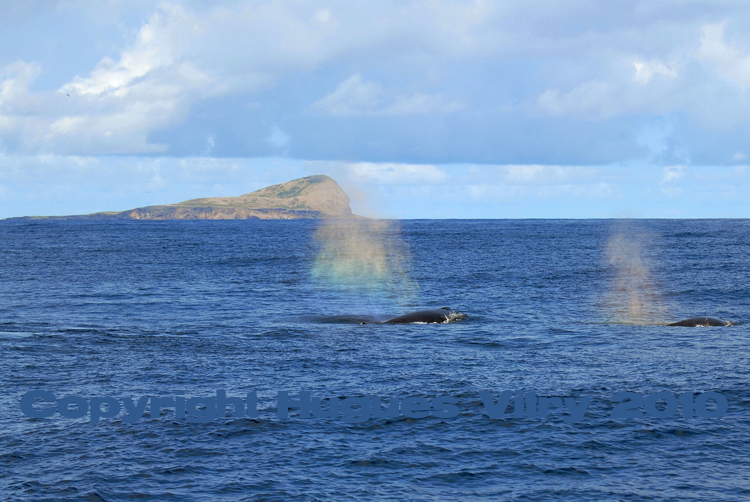
Humpback whales being a mammal breathe air like humans and they have lungs. They hold their breath when they swim underwater (apnea). hey have two openings at ehe centre of the skull above the eyes they use to breathe, these are their called blowholes or vents.
When they exhale, they blow lots of air mixed with water that fuses out in a big cloud of vapour looking like an umbrella.

These visible plume of vapour are visible from miles away.
Female have been observed in a strange vertical position about to give birth. She was standing vertically head down and the tail folded perpendicularly to the body horizontally out of the water, and the vagina was almost wide open. Although the whale was not moving and watching the observers, the observation was stopped in order not to stress the mother.
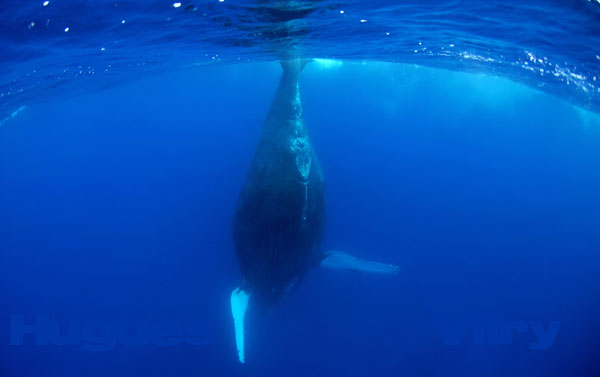
Mothers and new born calves would prefer staying on shallow plateau whilst mothers with older calves would swim around the islands in deeper water and play.
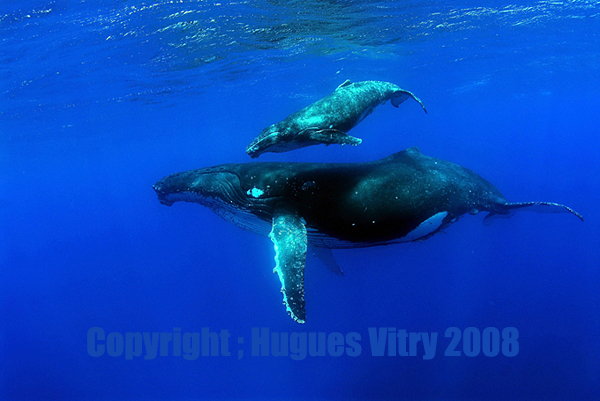
Mother and clalf
It is not rare to see one of those magnificent mastodons display spectacular breaches. they can coordinate their breaches miles apart in a spectacular, precise and same choreography!
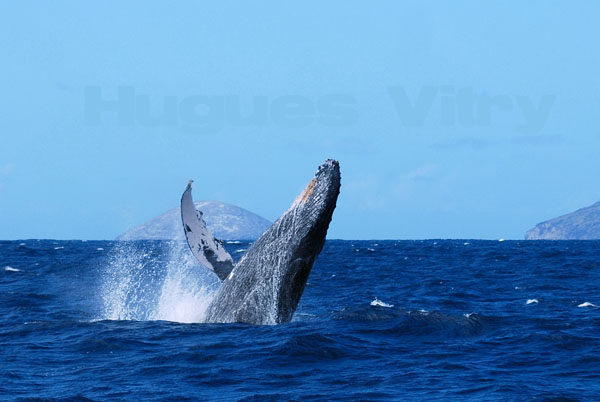

Normally when a whale starts breaching, it would reiterate at least three times in a row with a minute or more interval time.
